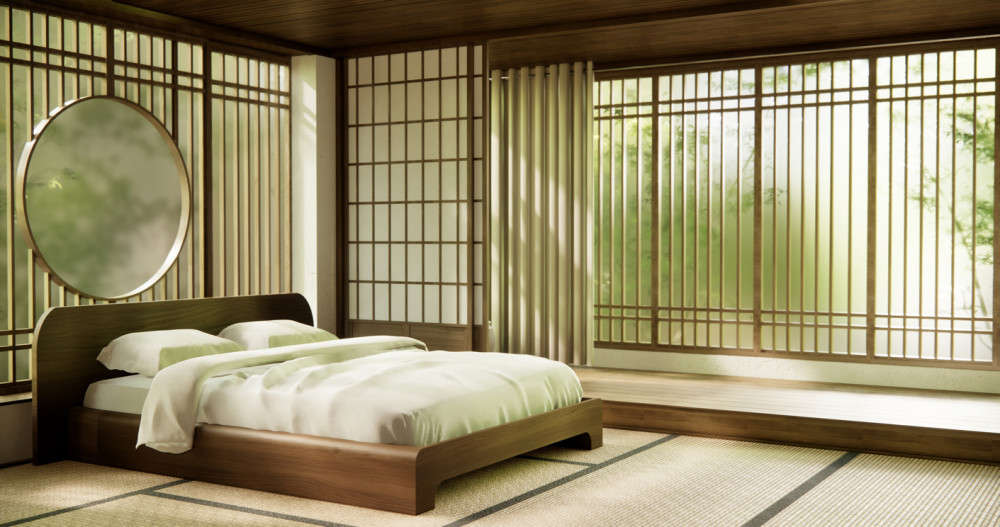August 14, 2024 A comprehensive guide to keeping your tatami mats clean and fresh By Carolyn Hopperton Are you wondering how to keep your tatami mats clean and in good condition? Tatami mats are a traditional Japanese flooring option, known for their natural beauty, antibacterial properties and comfort. However, like any flooring, maintaining them requires some care. Proper care and maintenance are needed to ensure they remain in pristine condition.
In this guide, we’ll explore easy-to-follow steps for cleaning and preserving your tatami mats, helping you maintain their integrity for years to come. We’ll also dive into a brief history of tatami and its crucial role as a staple flooring in traditional Japanese homes. Before diving into the cleaning process, it’s essential to understand the main components and characteristics of tatami mats .

Traditionally made from dried igusa (rice straw) and carefully wrapped in woven rush grass, tatami mats are recognized for their natural resilience and breathability regardless of the season. The standard size of a tatami mat is approximately 1.8 meters by 0.
9 meters, although variations may exist. Each mat consists of a core layer of straw covered by a tightly woven grass surface which creates a firm yet comfortable flooring surface for sitting and sleeping. Historically, tatami mats were reserved for the homes of aristocrats and nobility in Japan.
They greatly symbolized social status, elegance, and a strong bond to nature. Over time, their use expanded to encompass a broader range of households including commoners and lower-class families. Eventually, they evolved into a staple feature of traditional Japanese homes, known as washitsu (Japanese-style rooms).
The standard size of a tatami mat is based on the traditional unit of dimension known as a ken , which is approximately 3.3 square meters. This measurement has remained the same over centuries.
This allows for uniformity in room dimensions and architectural design for many traditional Japanese-styled homes. However, variations in size and shape are also available to accommodate different room layouts to make it customizable. Tatami mats offer several benefits beyond just their aesthetic appeal.
They are known for their natural insulation properties as they help regulate temperature and humidity levels within a room, creating a comfortable and inviting atmosphere year-round. The soft and resilient surface of tatami mats provides good support for sitting, kneeling, and sleeping on futons, making them versatile for various activities. For example, hosting guests, tea ceremonies, and family get-togethers.
In addition, tatami mats are closely associated with traditional customs and etiquette. For example, the layout of tatami mats within a room often follows specific guidelines based on social hierarchy and protocol. The arrangement of tatami mats can indicate the seating arrangements of the guests during formal gatherings.
The host typically occupies the space farthest from the entrance, known as the kamiza (top seat). Guests are seated closer to the entrance are, known as the shimoza (lower seat). Tatami mats are not just a flooring option but a reflection of Japanese culture and tradition.
To keep them looking their best, regular maintenance is key. Here’s how to care for your tatami mats along while offering practical tips and advice to help you preserve their beauty and functionality over long periods. To maintain the cleanliness and durability of your tatami mats, it’s important to follow a regular cleaning routine.
By following these simple steps, you can ensure that your tatami mats remain clean and well-maintained for years to come. Deep cleaning is usually performed by Japanese households every few months. In most scenarios, deep cleaning is done after every season, symbolizing a new beginning and welcoming a new period of the year.
For a more thorough cleaning, follow these steps periodically: In addition to regular cleaning, it’s essential to maintain proper humidity levels in the room to prevent the tatami mats from becoming too dry or damp in the summertime. Try to use a dehumidifier or humidifier as often as needed to achieve ideal humidity levels, typically between 40% and 60%, depending on the season and climate. In addition, rental properties with tatami mats require them to be in the same shape and quality as they were when before they were provided to the tenant moved-ins.
If the tatami mats are poorly maintained upon inspection, the tenants may need to pay an additional fee for the replacement of the tatami mats before moving out. With proper care and attention, your tatami mats can remain a beautiful and functional part of your home for years to come. By following these simple maintenance tips, you can preserve the integrity of your tatami mats and continue to enjoy their timeless appeal.
Tatami mats are an integral part of the culture and traditions thus, if you are living or renting a house or apartment with a tatami room, make sure to read this article to learn more tips on preserving and maintaining the excellent quality of your tatami mats. Read more like this: Japan’s akiya houses or our guide to pain medication in Japan ..



















